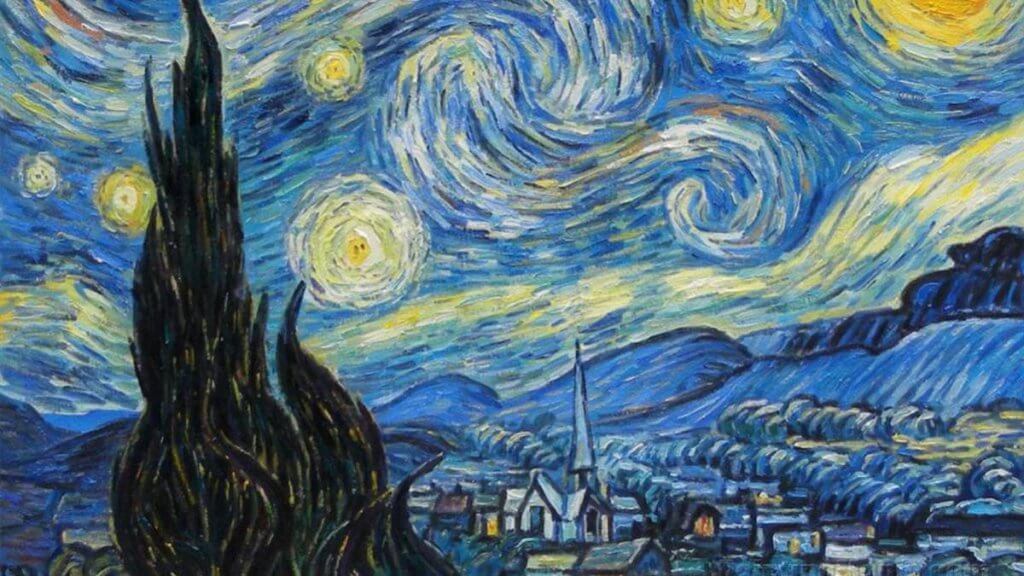Painters, writers, musicians. . . many artists in our history have said that their experiences of mania and depression allow them to connect more intensely with the world through their emotions. This inner consciousness, this archaic journey, surrounded by contradictory feelings, has led to speculation. about the relationship between creativity and bipolar disorder today.
First of all, it is important to clarify a small aspect, most creative people do not suffer from any mood disorder, however, if something is halfway between tradition and romance is to think that many of the most recognized artists have highlighted this. Link that many called (and call) “the madness of genius”.
“The madman, the lover and the poet are of a prodigious imagination. “Shakespeare-
However, bipolar disorder, and it is important to note, is not easy to diagnose, so we cannot dare say for sure that it was this disorder that they possessed personalities such as Van Gogh, Virginia Woolf or Ernest Hemingway. However, the sad results of their lives are there, as well as the inspiration they left in their unforgettable works.
We often fall on the easy label and associate genius with madness, and bipolar disorder as a gift to be particularly creative. None of these opinions are correct. Bipolar disorder is not a gift, it is a serious illness.
In this way, we cannot forget that psychological and psychiatric practices are not full of lunatics, these places are frequented by desolate people, who connect with their emotions in a dysfunctional, intense, sometimes uncontrolled way.
For those who want to deepen the relationship between creativity and bipolar disorder, read Kay Redfield Jamison. This psychiatrist and professor at Harvard Medical School offers a direct, raw and revealing testimony about this disease and what it entails. She herself suffers from this condition, and the testimonies given in books like?Are a restless mind very enriching from a personal, human and clinical point of view.
Since the disease began in adolescence, Kay Redfield’s life has completely changed, he has had seasons of complete manic exaltation, weeks full of rage, euphoria, psychotic symptoms and great artistic creativity, later crossed the threshold of depression and, with it, several suicide attempts.
So while many people think the only positive side of bipolar disorder is genius and prodigious creativity, we can’t ignore one aspect: a percentage of patients end up committing suicide.
No gift is worth such a high price. Dr. Kay Redfield knew this well and, therefore, dedicated his professional life to this disease and to understanding the relationship between creativity and bipolar disorder. Let’s see what science says about it.
It was in the 1970s that the first empirical study on creativity and its relationship to mental disorders was conducted, the University of Iowa argued that it was schizophrenia that was linked to creativity, so they analyzed a large group of recognized artists. , writers and musicians.
The results couldn’t have been more revealing. Schizophrenia was not related to this ability. It is mood disorders, such as major depression and mania, that have had a significant result. Nearly half of those who took part in the survey had this condition.
Redfield began his studies and research on bipolar disorder in the 1990s. Thus, and in collaboration with several hospitals, so far he has been able to discover the following:
A very prominent element in studies on creativity and bipolar disorder is that not everyone with bipolar disorder is creative, and most people with high creative potential do not suffer, as we have said, mental disorders.
However, it is always striking to see how, at times, the most striking pictorial works or musical compositions come from people with this disease, however, Dr. Kay Redfield Jamison notes: People with this diagnosis report that their creativity is much better during periods of remission or when symptoms are mild or absent.
The reason? When they are depressed they cannot work, and during manic or psychotic episodes the mind works very fast, becomes chaotic and incoherent Creativity, to achieve excellence, needs above all an awake mind, but above all lucid, focused, relaxed. Chaos, as a base, is not a good place to live or create.

